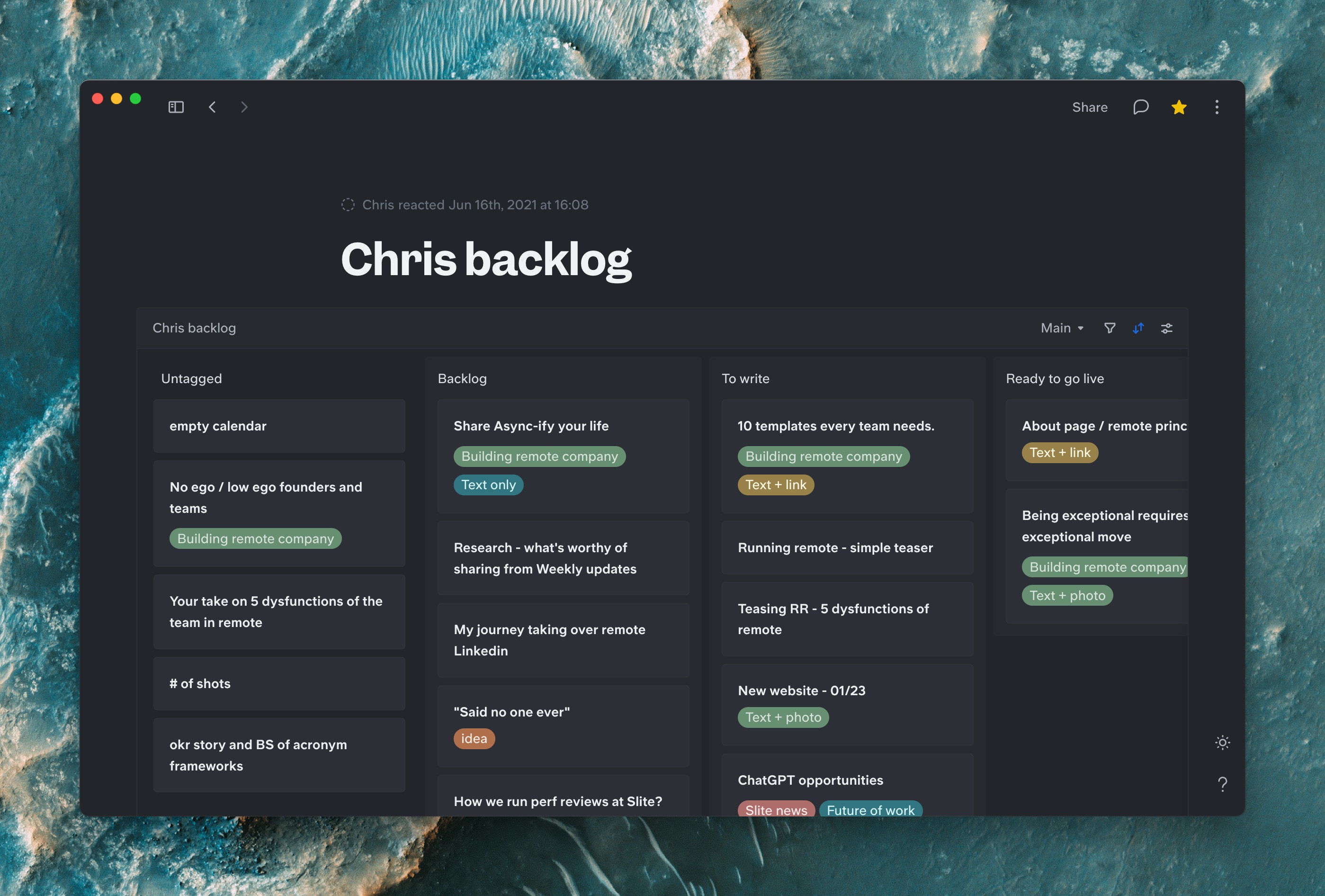Collections (Databases)
Collections are one of the most powerful tools in Slite. They let you better organize long list of docs, with tags and other attributes, without polluting the sidebar.
Note: At this time, you might experience some performance issues if your collection gets too big and includes more than 300 docs. If that is the case, please contact us at support@slite.com .
What is a Collection?
A Collection is a simple database connected with documents underneath. It helps your team organize a specific set of docs into a single source of truth that you can refer to across your workspace.
You can enrich your docs with tags, owner, dates, and other attributes, to filter the data and create views to embed in others documents in Slite.
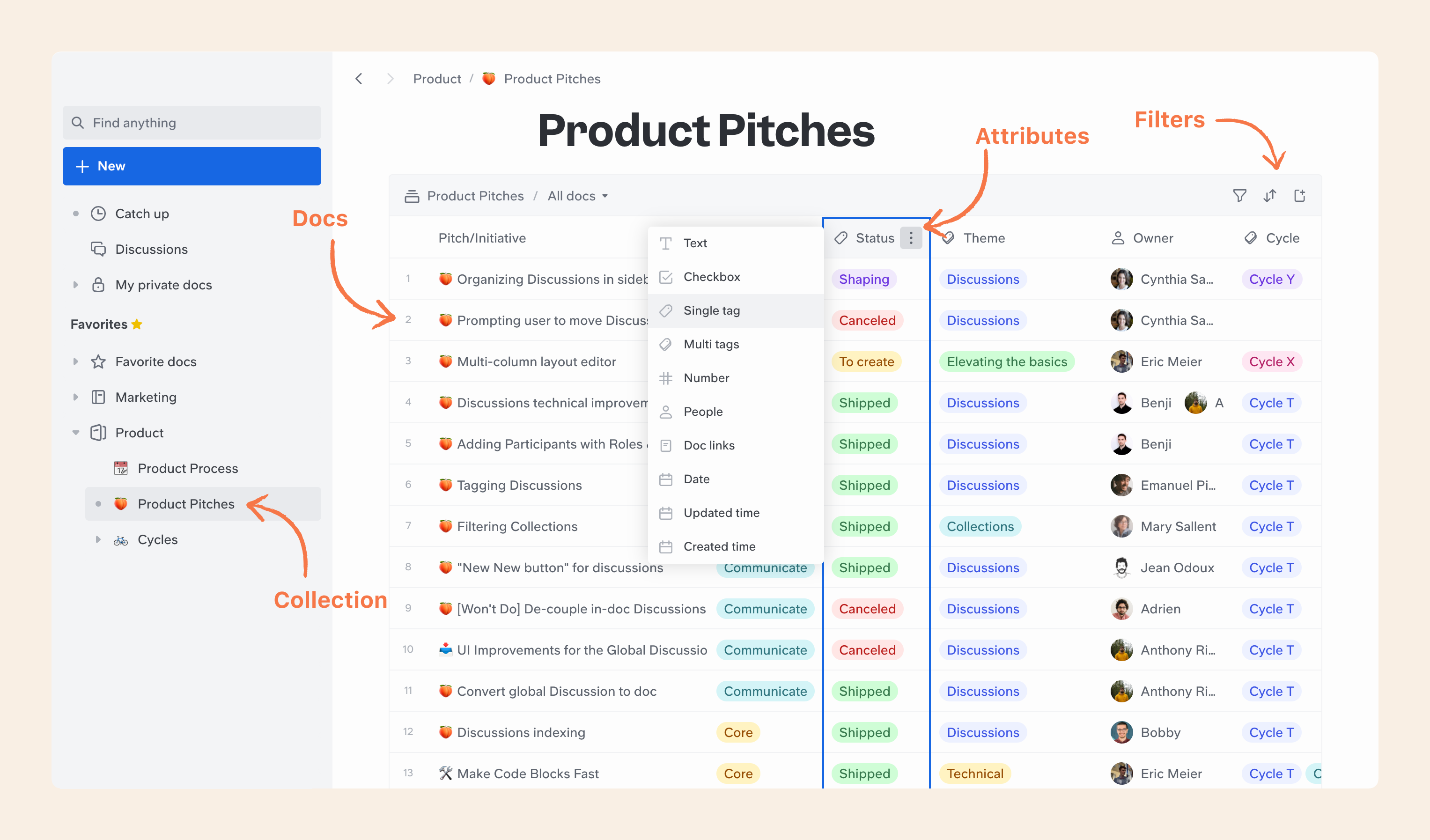
Some great use cases include Project documentation, Product specs, OKRs, User interviews, or Job openings.
Collections also help to declutter your sidebar. When you start to see endless lists of docs in your sidebar, it's a good sign to try them.
1 minute guide
2 ways to create a new collection
Turn an empty doc into a collection
If the document contains children documents, they'll be automatically added to the Collections.

From the editor
Simply hit
/collection and hit New collection .
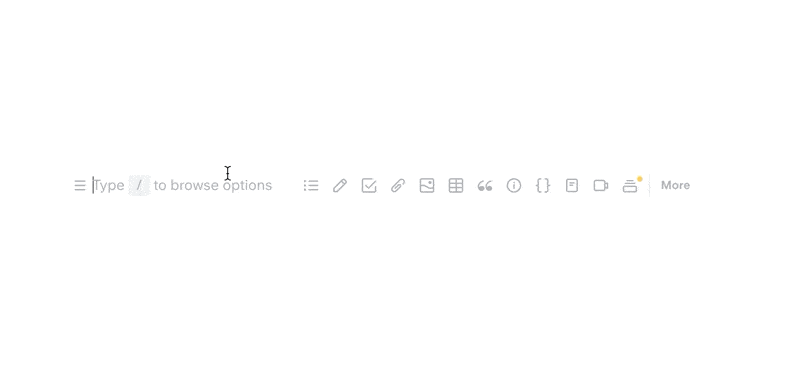
Embedding a Collection in a doc
You can display a subset or all your Collection in any doc.
This is pretty handy to refer to a list of documents while avoiding duplicating content, and keeping one single source of truth.
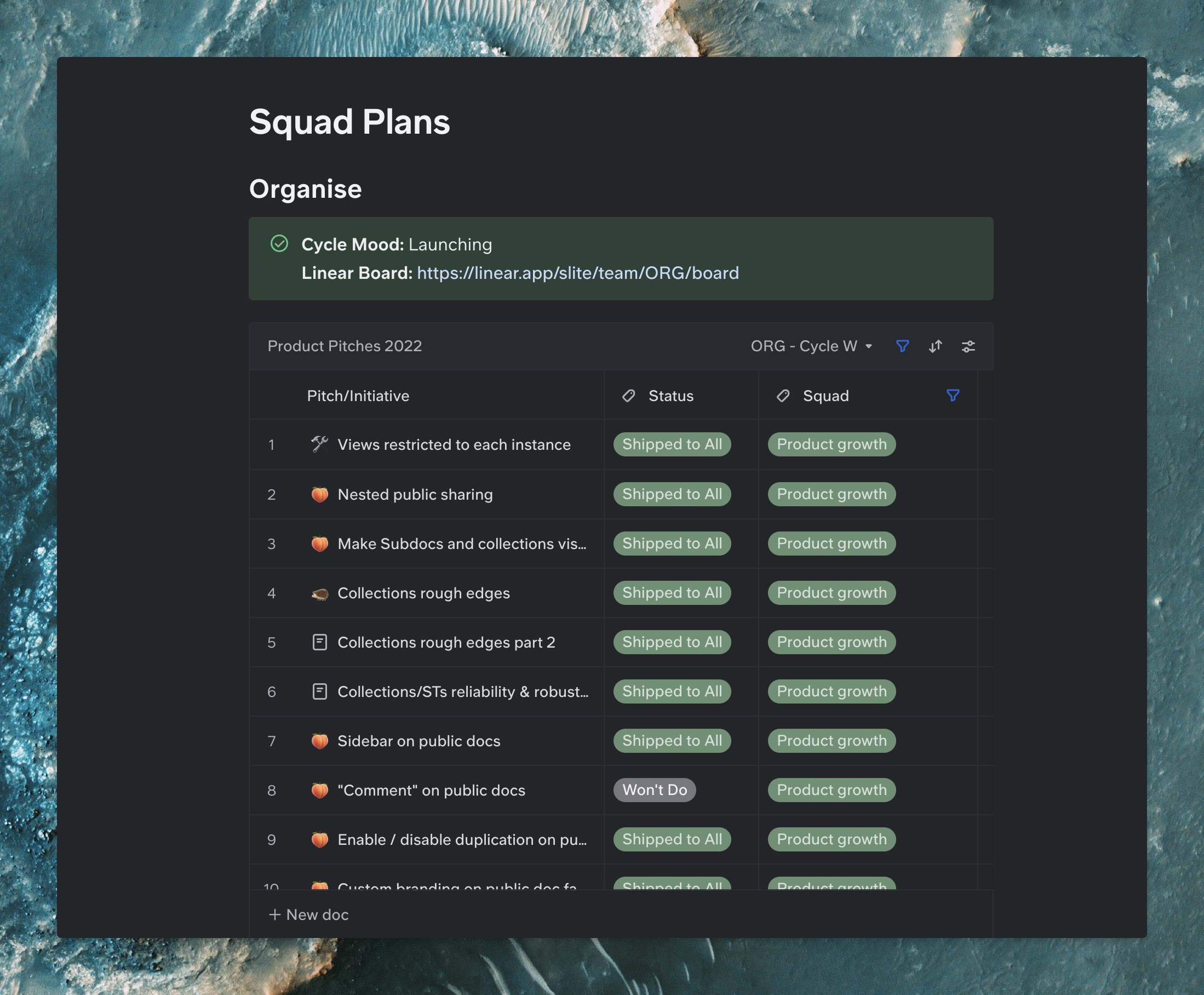
The block showing up will simply act as a reference. You can remove it without losing your collection.
Navigate through docs in collections
When you open a doc in a Collection, you can easily navigate using the top/down arrows at the top.
You can also change the metadata directly from the preview at the top of the doc. The changes will also reflect in the columns of the Collection.
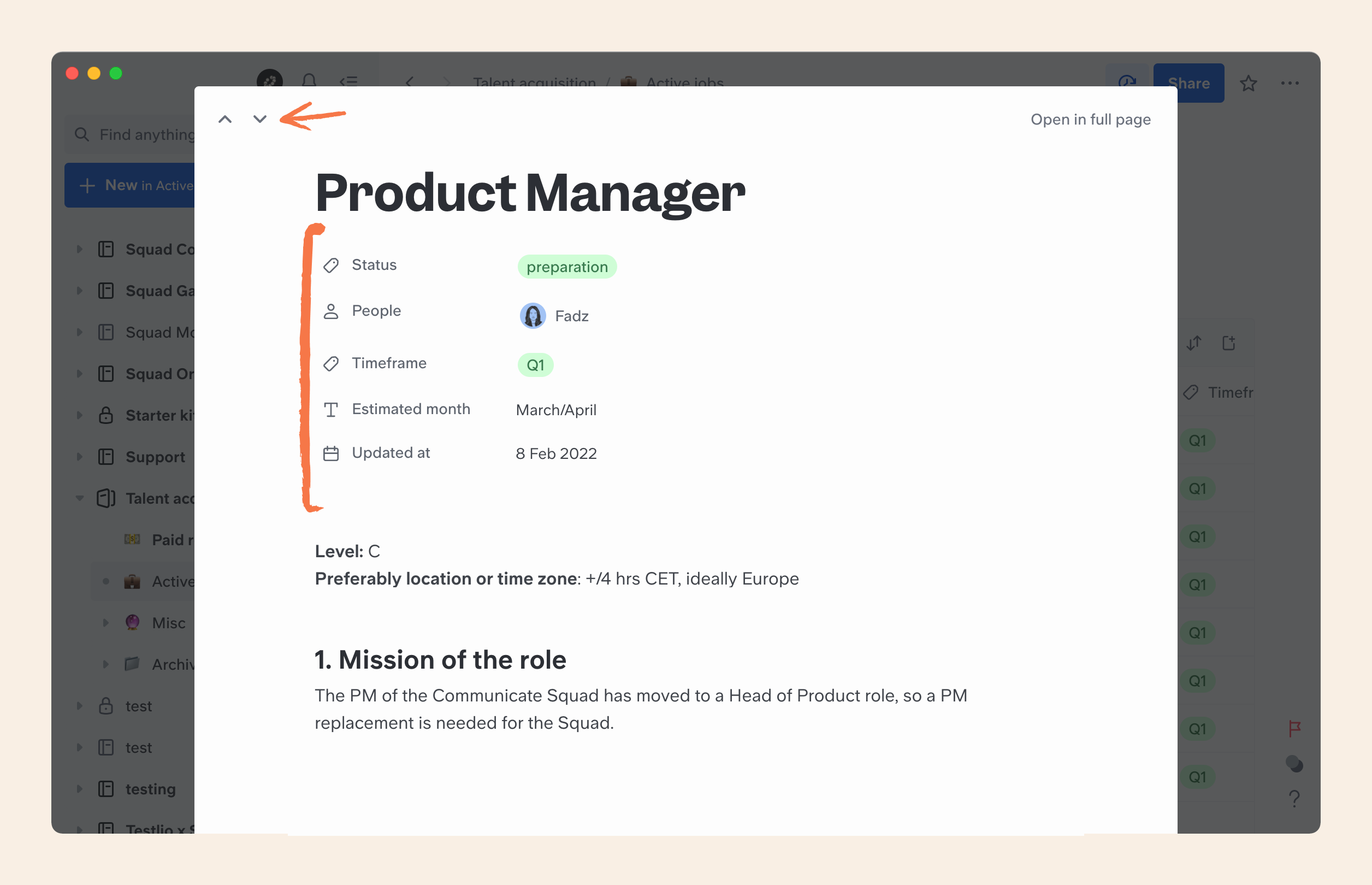
How to use the Board View?
Slite is not a project management tool (we use Linear internally, and highly recommend it), but for simple projects, we developed a Board view.
It makes it easy to visualize your docs by status, in a simple Kanban format. To learn how to use it, check out 📋Board views (Kanban) .
